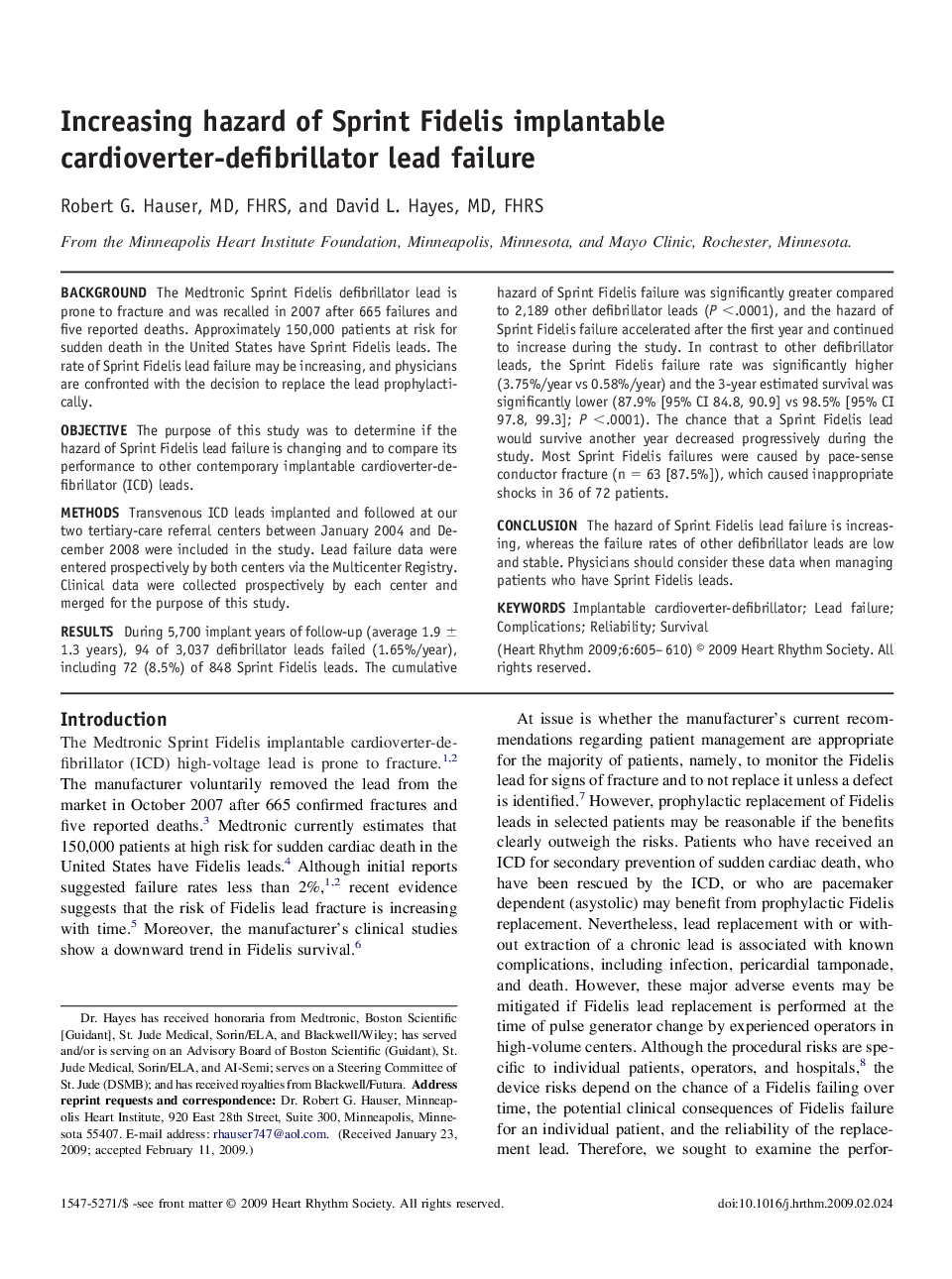| کد مقاله | کد نشریه | سال انتشار | مقاله انگلیسی | نسخه تمام متن |
|---|---|---|---|---|
| 2923638 | 1175882 | 2009 | 6 صفحه PDF | دانلود رایگان |

BackgroundThe Medtronic Sprint Fidelis defibrillator lead is prone to fracture and was recalled in 2007 after 665 failures and five reported deaths. Approximately 150,000 patients at risk for sudden death in the United States have Sprint Fidelis leads. The rate of Sprint Fidelis lead failure may be increasing, and physicians are confronted with the decision to replace the lead prophylactically.ObjectiveThe purpose of this study was to determine if the hazard of Sprint Fidelis lead failure is changing and to compare its performance to other contemporary implantable cardioverter-defibrillator (ICD) leads.MethodsTransvenous ICD leads implanted and followed at our two tertiary-care referral centers between January 2004 and December 2008 were included in the study. Lead failure data were entered prospectively by both centers via the Multicenter Registry. Clinical data were collected prospectively by each center and merged for the purpose of this study.ResultsDuring 5,700 implant years of follow-up (average 1.9 ± 1.3 years), 94 of 3,037 defibrillator leads failed (1.65%/year), including 72 (8.5%) of 848 Sprint Fidelis leads. The cumulative hazard of Sprint Fidelis failure was significantly greater compared to 2,189 other defibrillator leads (P <.0001), and the hazard of Sprint Fidelis failure accelerated after the first year and continued to increase during the study. In contrast to other defibrillator leads, the Sprint Fidelis failure rate was significantly higher (3.75%/year vs 0.58%/year) and the 3-year estimated survival was significantly lower (87.9% [95% CI 84.8, 90.9] vs 98.5% [95% CI 97.8, 99.3]; P <.0001). The chance that a Sprint Fidelis lead would survive another year decreased progressively during the study. Most Sprint Fidelis failures were caused by pace-sense conductor fracture (n = 63 [87.5%]), which caused inappropriate shocks in 36 of 72 patients.ConclusionThe hazard of Sprint Fidelis lead failure is increasing, whereas the failure rates of other defibrillator leads are low and stable. Physicians should consider these data when managing patients who have Sprint Fidelis leads.
Journal: Heart Rhythm - Volume 6, Issue 5, May 2009, Pages 605–610